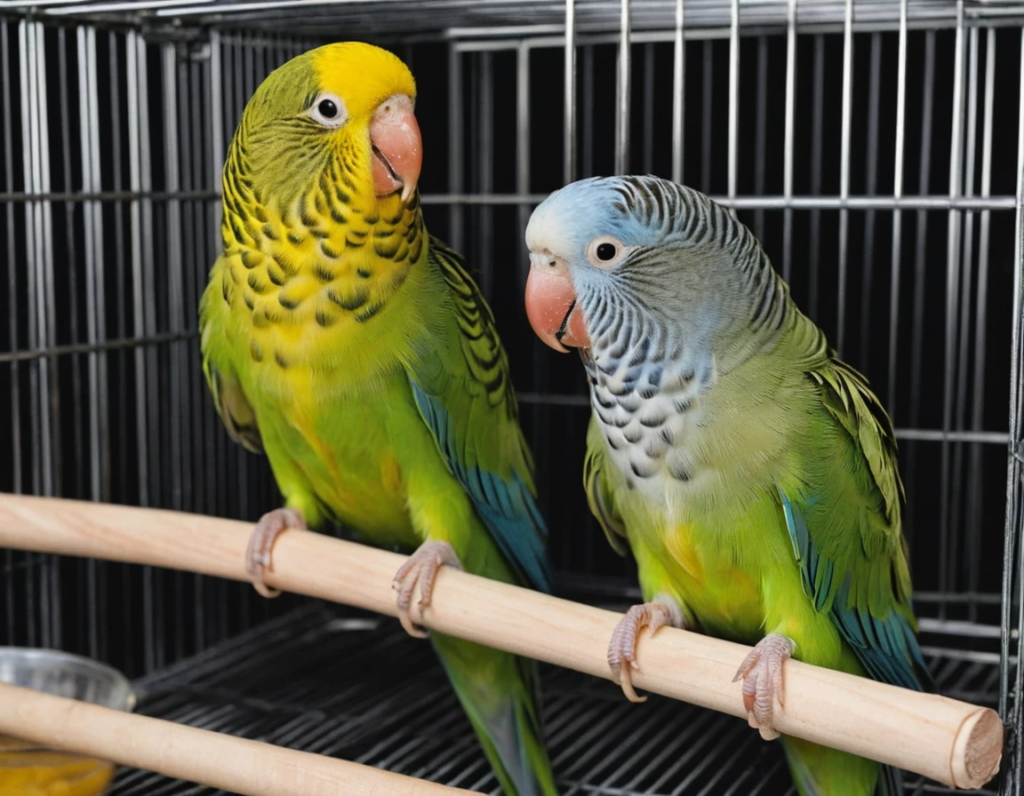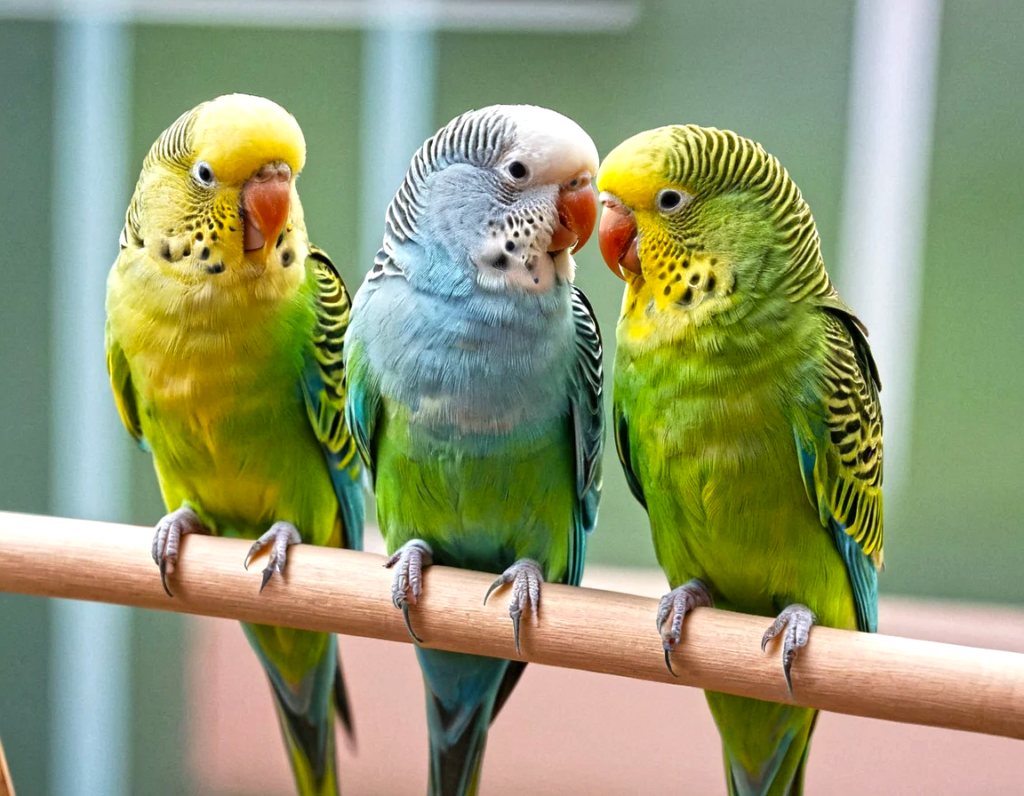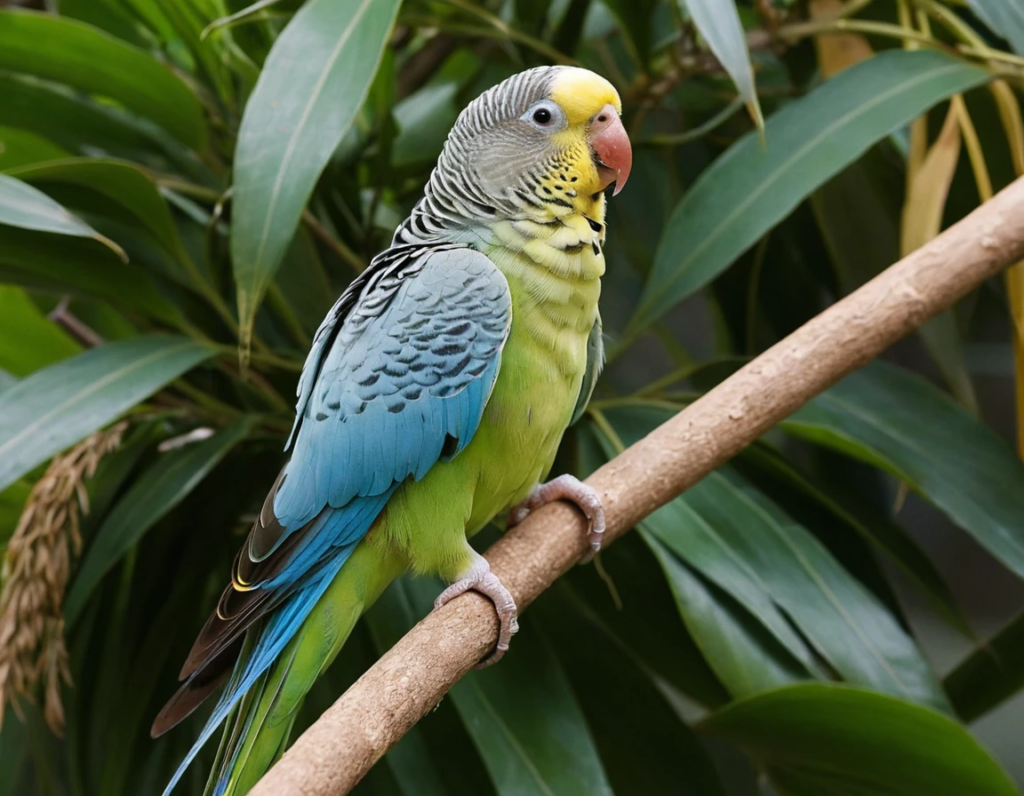
If you’ve recently adopted a parakeet (or are about to), congratulations! You’ve just signed up for years of chirpy companionship and endless entertainment. But before your feathered friend moves in, you’ll need to get their home—the parakeet cage—ready. A good cage setup isn’t just about keeping your bird safe; it’s about creating a cozy, stimulating, and fun environment. Let’s break it down step by step, with a few laughs along the way.
1. Choosing the Right Cage: Size Does Matter
First things first: size matters. Parakeets are small, but they’re incredibly active. A cramped cage is like a studio apartment with no Wi-Fi—unlivable. Aim for a cage that’s at least 18 inches wide, 18 inches deep, and 24 inches tall. Bigger is always better, especially if you plan to house multiple parakeets. Horizontal space is key since parakeets love to hop and flutter around.
Pro tip: Make sure the bar spacing is no more than half an inch. Anything wider, and your bird might stick its head out—or worse, attempt a daring (and dangerous) escape.
2. Cage Placement: Location
Think of your parakeet cage as prime real estate. You want to place it in a spot that’s draft-free, away from direct sunlight, and safe from curious pets (we’re looking at you, Mr. Whiskers). A corner of the living room works great; it keeps your parakeet part of the action without overwhelming them.
Avoid the kitchen. Sure, it smells like heaven in there, but fumes from non-stick cookware can be toxic to birds. Plus, no one wants a bird’s critique on their cooking.
3. Perches: Not Just Sticks
Your parakeet spends a lot of time standing, so give them a variety of perches. Natural wood perches are a must; they help keep your bird’s feet healthy and their nails trimmed. Avoid sandpaper perches (seriously, who thought that was a good idea?). They can harm your bird’s delicate feet.
Pro tip: Place perches at varying heights and angles. Think of it as your bird’s jungle gym—but without the admission fee.
4. Toys: Fun and Mental Stimulation
Parakeets are smart, curious creatures. Without toys, they’ll get bored—and a bored bird is like a bored toddler. Cue chaos.
Include a mix of toys like:
- Bells (because who doesn’t love a good jingle?)
- Chew toys made of bird-safe materials
- Mirrors (but don’t overdo it; your bird might fall too in love with their reflection)
- Foraging toys to keep their brain busy
Rotate the toys weekly to keep things fresh. And don’t be surprised if your parakeet has opinions about their toys. Yes, they can be a little diva-ish.
5. Food and Water: Fine Dining for Your Feathered Friend
Place food and water dishes in an accessible, stable spot inside the cage. Stainless steel or ceramic dishes are best; they’re easy to clean and don’t harbor bacteria.
Your parakeet’s menu should include:
- A high-quality seed mix or pellets
- Fresh fruits and veggies (yes, they’re healthier than birdie junk food)
- Fresh, clean water daily (because parakeets, unlike humans, won’t settle for yesterday’s coffee)
Avoid foods like avocado, chocolate, and caffeine. These are as toxic to birds as internet trolls are to your sanity.
6. Lining the Cage: Keep It Clean
The bottom of the parakeet cage should have a removable tray lined with paper (newspaper or plain butcher paper works well). Avoid sand or wood shavings; they’re messy and can harbor mold.
Clean the tray daily. It’s not the most glamorous task, but hey, your bird does their part by being adorable.
7. Bath Time: Splish, Splash, Your Bird Needs a Bath
Parakeets love to bathe. Provide a shallow dish of lukewarm water or a bird bath that attaches to the cage. Alternatively, you can mist them gently with a spray bottle. Just don’t expect them to share the bath with you—boundaries, please.
8. Covering the Cage at Night: Sweet Dreams
At night, cover the cage with a breathable cloth to help your parakeet feel safe and secure. Think of it as their cozy blanket. Just make sure there’s enough ventilation.
A covered cage signals bedtime and keeps them from being startled by late-night activities (like you sneaking to the fridge for that extra slice of cake).
9. The Final Touch: Bonding with Your Bird
Setting up the perfect parakeet cage is only half the story. The real magic happens when you spend time with your bird. Talk to them, whistle a tune, or just sit nearby. Parakeets are social and love interacting with their humans.
Oh, and don’t be surprised if your bird starts mimicking your laugh or learning to say, “Who’s a pretty bird?” Spoiler: They’re talking about themselves.

Wrapping It Up
Setting up a parakeet cage might seem like a big task, but it’s worth every minute. A well-thought-out cage is more than just a home; it’s a space where your parakeet can thrive. So take your time, add a little flair, and enjoy the process. After all, your feathery friend is counting on you to get it right.
And remember, a happy parakeet equals a happy home. Plus, who doesn’t want a tiny, chirping comedian in their life? Now go forth and set up that parakeet palace!
FAQs about Parakeet Cage Setup
1. What size cage is best for a parakeet?
Answer: A cage at least 18”x18”x24” is the minimum for one parakeet. Larger is always better.
2. How many perches should I put in the cage?
Answer: Include at least 2-3 perches of varying thickness and material for foot health.
3. Can I use sandpaper perches for my parakeet?
Answer: No, sandpaper perches can harm your parakeet’s feet.
4. Where should I place the parakeet cage?
Answer: In a lively area at eye level but away from drafts and direct sunlight.
5. What kind of toys are safe for parakeets?
Answer: Toys made of bird-safe materials like wood, rope, and plastic are best.
6. Should I include a mirror in the cage?
Answer: Yes, but only if your parakeet is a solo bird and doesn’t rely on it for social interaction.
7. How often should I clean the cage?
Answer: Change the liner daily, wash bowls daily, and deep clean the cage monthly.
8. Can I use any type of paper for cage lining?
Answer: Use non-toxic, ink-free paper like plain newspaper.
9. Do parakeets need a bird bath?
Answer: Yes, they enjoy bathing 2-3 times a week.
10. What foods should I avoid feeding my parakeet
Answer: Avoid avocado, chocolate, caffeine, and salty or sugary foods.
11. How can I prevent boredom in my parakeet?
Answer: Rotate toys weekly and spend daily bonding time.
12. What is the ideal temperature for a parakeet?
Answer: Parakeets thrive in 65-75°F (18-24°C).
13. Can parakeets live outdoors?
Answer: No, they are indoor birds and need a controlled environment.
14. Should I let my parakeet out of the cage?
Answer: Yes, daily supervised playtime outside the cage is essential.
15. What bar spacing is safe for parakeets?
Answer: Bars should be spaced no more than 1/2 inch apart.
16. Do parakeets need natural sunlight?
Answer: Yes, indirect sunlight is beneficial, but avoid direct exposure.
17. How many parakeets can live in one cage?
Answer: Ensure at least 4,000 cubic inches of space per bird.
18. Are plastic cages suitable for parakeets?
Answer: No, metal cages are safer and more durable.
19. How do I bird-proof a room for playtime?
Answer: Remove hazards like ceiling fans, toxic plants, and open windows.
20. Can I hang the cage from the ceiling?
Answer: Yes, as long as it is secure and at eye level.
21. What type of food is best for parakeets?
Answer: A balanced diet of seeds, pellets, and fresh fruits and veggies.
22. How can I tell if my parakeet is happy?
Answer: A happy parakeet sings, chirps, and interacts with their environment.
23. Do I need a night cover for the cage?
Answer: Yes, covering the cage at night helps them sleep.
24. Can I use essential oils around parakeets?
Answer: No, many essential oils are toxic to birds.
25. How often should I replace the perches?
Answer: Replace them when they show signs of wear or damage.
26. Do parakeets need a companion?
Answer: While they thrive in pairs, solo birds can be happy with human interaction.
27. What type of water is safe for parakeets?
Answer: Use clean, filtered water to avoid contaminants.
28. Are coloured toys safe for parakeets?
Answer: Yes, as long as they are made with non-toxic dyes.
29. How do I introduce a new toy to my parakeet?
Answer: Place it outside the cage first so they can get used to it.
30. What is the lifespan of a parakeet?
Answer: With proper care, parakeets can live 10-15 years.


